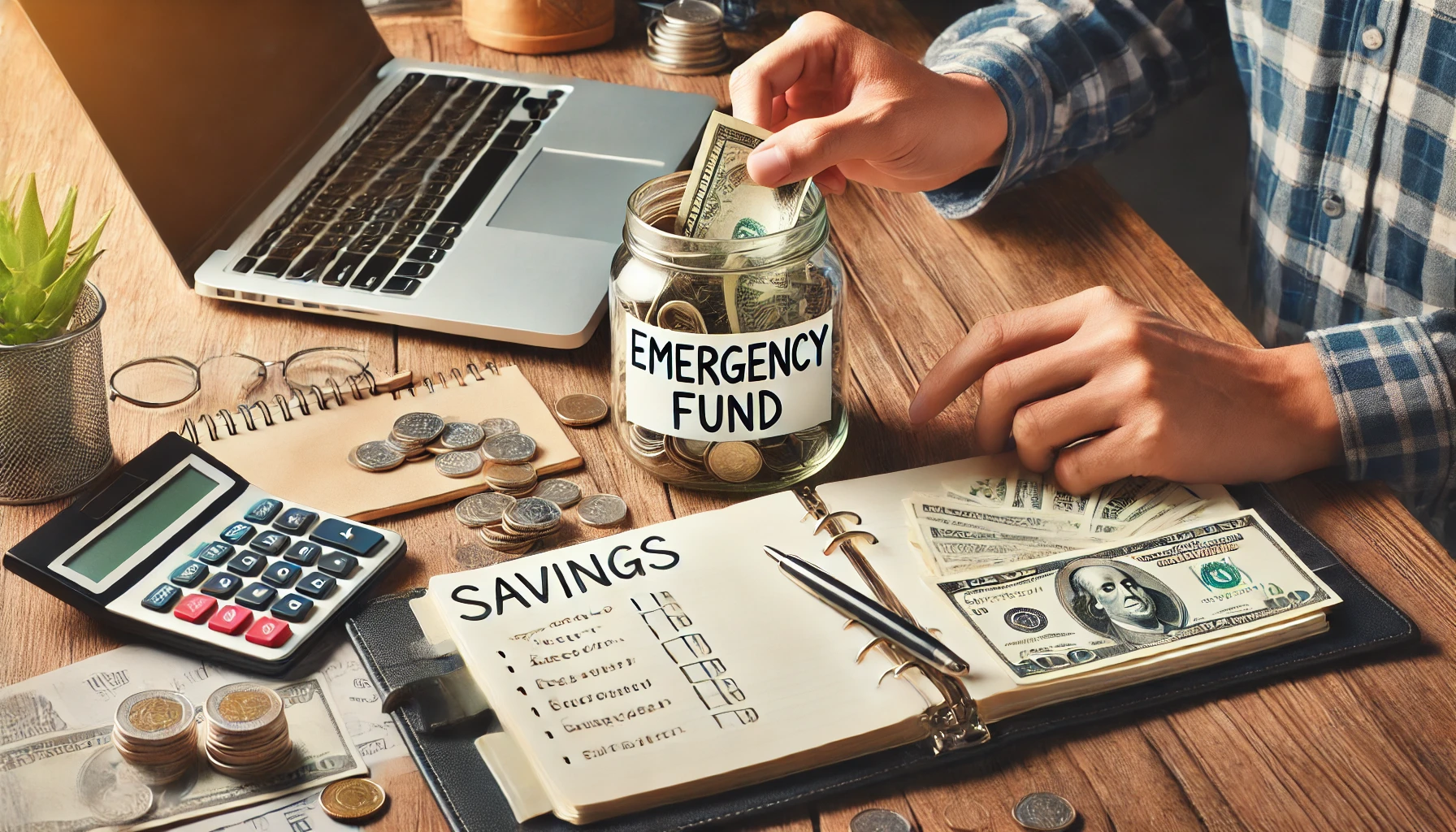An emergency fund is a financial safety net that protects you from unexpected expenses, such as medical emergencies, car repairs, or job loss. Without one, you may end up relying on credit cards, loans, or dipping into investments, which can put you in financial trouble.
In this guide, you’ll learn why an emergency fund is essential, how much you should save, and the best ways to build one—step by step.
Why You Need an Emergency Fund
Unexpected expenses can happen at any time. An emergency fund gives you peace of mind and financial security by allowing you to:
✔ Handle unexpected medical bills without debt
✔ Pay for urgent home or car repairs
✔ Cover living expenses if you lose your job
✔ Avoid using credit cards or loans in emergencies
💡 Without an emergency fund, a single financial setback could put you in debt for years!
How Much Should You Save?
The right amount for your emergency fund depends on your income, expenses, and financial situation.
📌 Basic Starter Fund: $500 – $1,000 (Great for beginners!)
📌 Ideal Emergency Fund: 3 to 6 months of living expenses
📌 Extra Security: 6 to 12 months of expenses (Best for freelancers or those with unstable income)
💡 Example: If your monthly expenses are $2,500, a fully funded emergency fund should have between $7,500 and $15,000.
Where to Keep Your Emergency Fund
Your emergency fund should be easy to access but not too easy to spend.
Best Places to Store It:
✅ High-Yield Savings Account – Earns more interest than a regular savings account
✅ Money Market Account – Offers easy access and better interest rates
✅ Separate Bank Account – Keeps it away from everyday spending
💡 Avoid keeping your emergency fund in a checking account where you might accidentally spend it!
How to Build Your Emergency Fund – Step by Step
Even if you’re starting from zero, you can build an emergency fund by following these steps:
Step 1: Set a Savings Goal
Decide how much you need and set a realistic goal.
📌 Example:
🎯 Short-term goal: Save $1,000 within 3 months
🎯 Long-term goal: Save 3 months of expenses within a year
💡 Break it down into small, manageable milestones!
Step 2: Open a Separate Savings Account
Keep your emergency fund separate from your regular spending account.
💡 Look for an account with no monthly fees and a high interest rate.
Step 3: Automate Your Savings
Set up automatic transfers to your emergency fund every payday.
📌 Example:
✔ Transfer $50 every week → Save $2,600 per year
✔ Transfer $200 per month → Save $2,400 per year
💡 Automation makes saving effortless—you won’t even miss the money!
Step 4: Cut Unnecessary Expenses
Find areas where you can cut back and redirect that money into savings.
✔ Cancel unused subscriptions
✔ Reduce eating out and cook more at home
✔ Use public transport instead of driving every day
💡 Even small savings add up—cutting $5 per day on coffee can save you $1,800 per year!
Step 5: Use Windfalls Wisely
Whenever you get extra money (tax refunds, bonuses, gifts), put a portion into your emergency fund.
✔ 50% to savings
✔ 30% to debt repayment
✔ 20% for fun
💡 This way, you enjoy your money while still securing your future!
When to Use Your Emergency Fund
🚨 DO use it for:
✔ Medical emergencies
✔ Urgent home or car repairs
✔ Unexpected job loss
🚫 DON’T use it for:
❌ Vacations
❌ Shopping or new gadgets
❌ Non-essential expenses
💡 If you use it, make a plan to replenish it as soon as possible!
Final Thoughts: Start Your Emergency Fund Today!
An emergency fund is one of the most important financial tools for stability and peace of mind. Even if you start small, every dollar saved brings you closer to financial security.
📌 Action Steps:
✅ Set a savings goal and open a dedicated account
✅ Automate contributions, even if it’s just $20 per week
✅ Reduce unnecessary spending and redirect money into savings
✅ Use windfalls and bonuses to boost your fund
The sooner you start, the more prepared you’ll be for life’s surprises! 🚀

